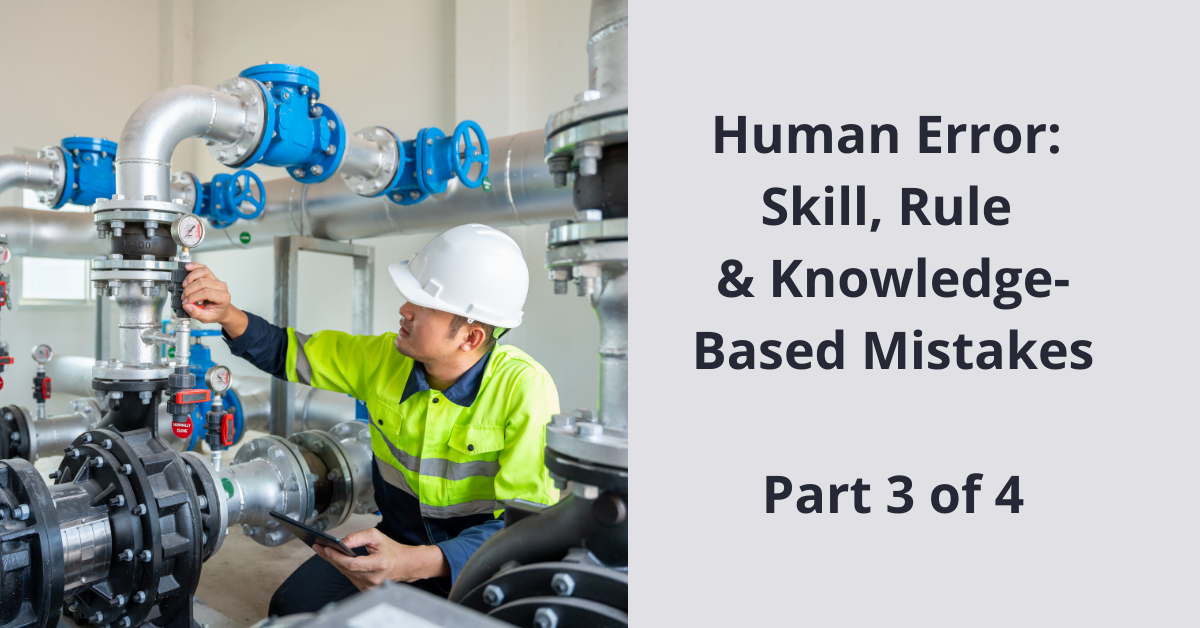Rule-based Mistakes

Welcome back to my series about skill, rule, and knowledge-based mistakes. This series is based on the Skills, Rules, Knowledge (SRK) Model developed by Jens Rasmussen, and the Generic Error-Modelling System (GEMS) developed by Dr. James Reason, (described in Part 1). Last week, I posted about skill-based errors, (Part 2). Today, I’m focusing on rule-based mistakes to give us better insight into what these models can teach us.
These research models reveal that workers will make mistakes due to normal thought processes. This is significant because many times we want to “correct” a worker’s perceived poor behavior with ineffective methods. Learn about how you can stop human error more effectively than disciplining or blaming the worker.
What are Rule-based Mistakes?
Rule-based mistakes occur when a worker’s actions match intentions but do not achieve the desired outcome due to incorrect application of a rule. Rule-based mistakes may also occur when someone is following a bad rule or applying a good rule to the wrong situation.
This doesn’t mean that “good rules” are morally correct and “bad rules” are immoral. “Bad” rules are created because workers get an outcome they like when creating them. Recall the example in Part 1 of this series, “a worker may know the company rule is a ten-minute morning break, but if she rushes through her tasks, no one says anything if she takes twenty minutes.” She has created her own “bad” rule.
Rules can be:
- procedures.
- something the worker was taught.
- something that was communicated to the worker.
- a rule the worker made up on his or her own.

Examples of Rule-based Mistakes
Rule-based mistakes usually start out with good and rational decisions.
You drive over the speed limit because you get where you are going faster, and you get a ticket. (You made the rule-based mistake of following a “bad” rule because it gave you good results in the past, and you didn’t get caught.)
A maintenance worker incorrectly programmed a new infusion pump following the directions used for an older model and the pump failed. (The rule-based mistake is the application of a “good” rule to a wrong situation.)
An operator’s rule is that if voltage goes low, put in a capacitor. However, the capacitor had not discharged from its last use and following the “rule” damaged the equipment. (The rule-based mistake is following the right rule but getting an unintended consequence.)
Are Rule-based Mistakes Common?
Rule-based mistakes happen frequently, but not as frequently as skill-based errors. This is because we spend most of our time doing skill-based tasks.
A TapRooT® Root Cause Analysis investigation can identify rule-based mistakes to analyze for root causes. Then, you can develop corrective actions to stop them from recurring.
Mark your Calendar for our Stopping Human Error Course
Learn more about stopping human error. You’ll learn tried and true strategies as well as how to design a human performance improvement program.
Join me next week
In next week’s post, I’ll focus on how to practically apply knowledge about these models to knowledge-based errors.
References for this Series
The Skill, Rule and Knowledge-Based Classification



